As part of the required education component
for our entry/stay experience in Cuba,
Cheryl arranged for an eight-hour tour.
Well, with the airport delays, checking in etc.,
we were so famished; we had to eat a meal and decided
to do so at the hotel restaurant that had the best reviews.
Some of the restaurants (there are several) had received
negative opinions about their food, but the one by the pool was more highly-rated.
The consequence was we were late to meet our tour director and start the tour.
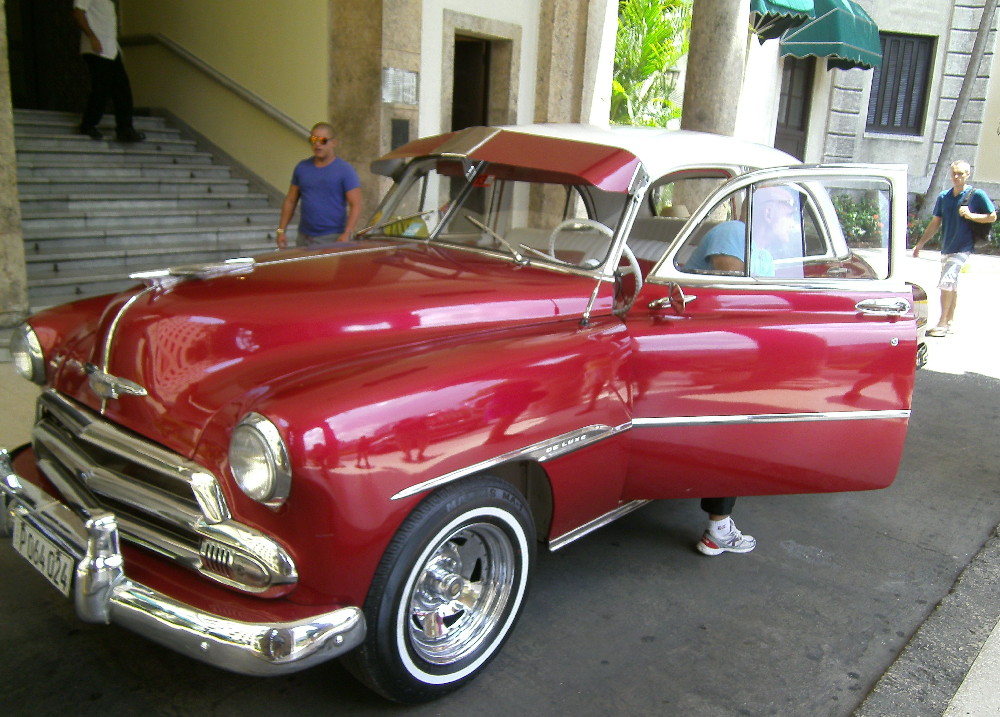
Imagine our delight and surprise to walk out the door
with Myron (our guide) and find TWO classic American cars
as our conveyances!
Driver Tony had the white-over-red '51 Chevy . . .
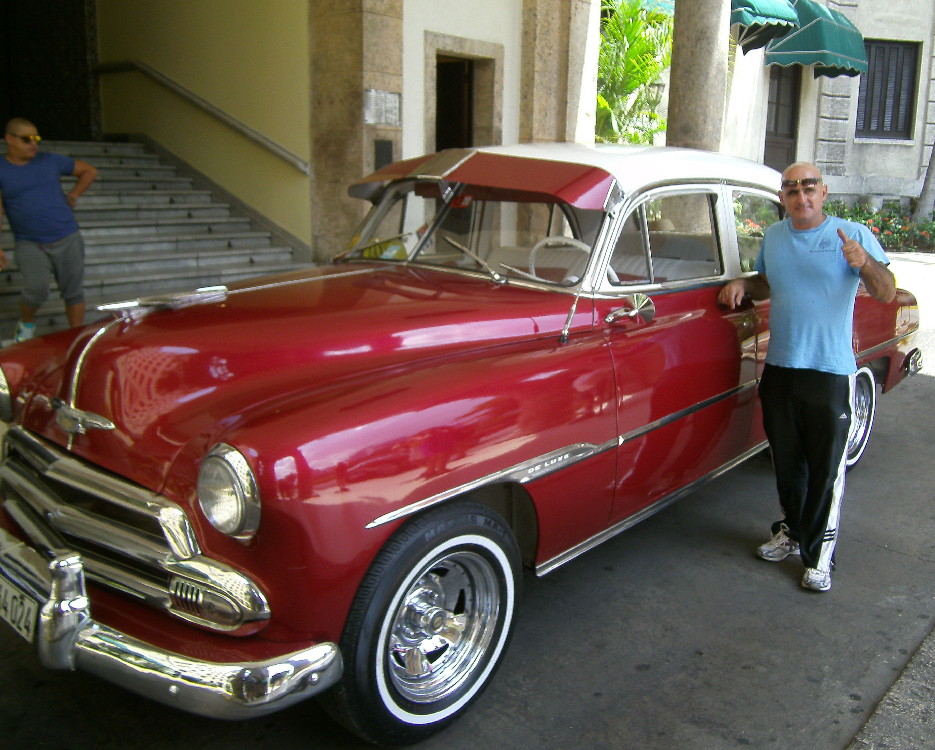
. . . and driver Eduardo drove the '57 (I think) Mercury.
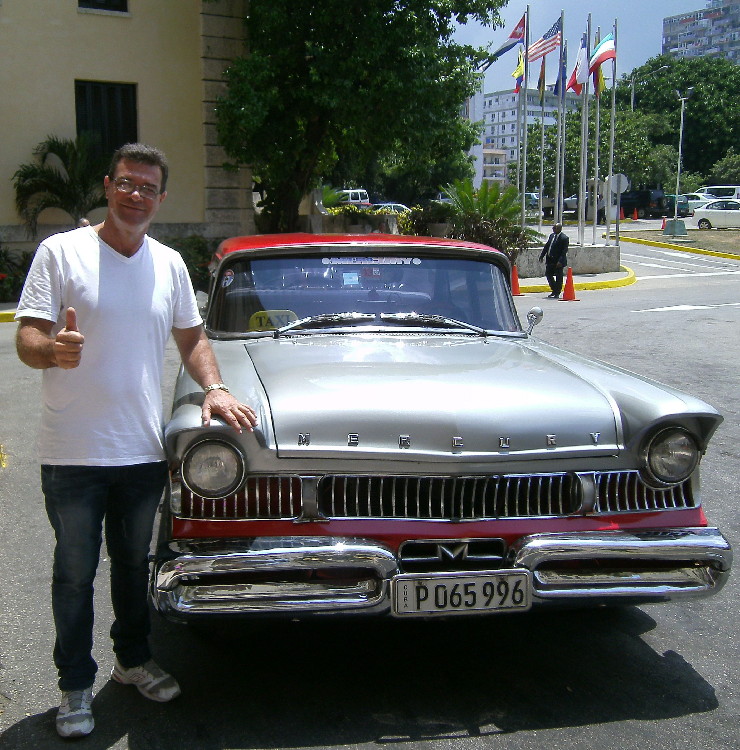
In Cuba, IT IS ILLEGAL TO SELL A CAR.
So these vehicles were family heirlooms.
As you'll see, the Merc has been converted with after-market A/C
and the engine has been rebuilt. Each driver OWNS HIS OWN CAR
and these are some of the best-paid workers in Cuba.
A doctor or a lawyer may earn $CUC 24-29 a MONTH!
(That's equivalent to $USD 24-28.)
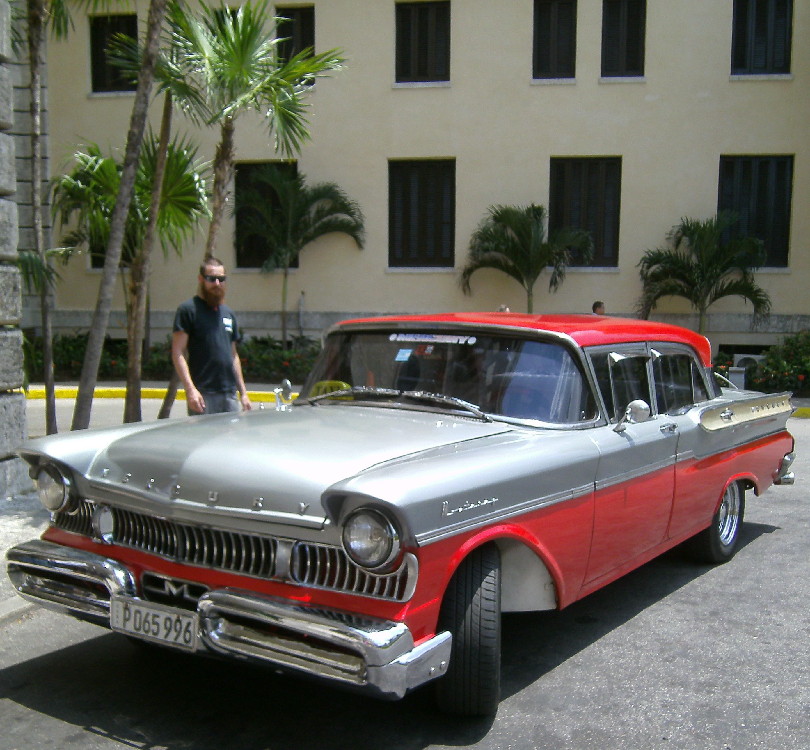
[Some articles to read before you fly to Cuba to import these cars,
thinking to make a fortune:
[SEE THE CLASSIC CARS OF CUBA: PHOTOS
[WHAT ENDING THE CUBAN EMBARGO WOULD MEAN FOR CAR LOVERS
[WHY AMERICANS WILL OVERPAY FOR CUBA'S VINTAGE CARS]
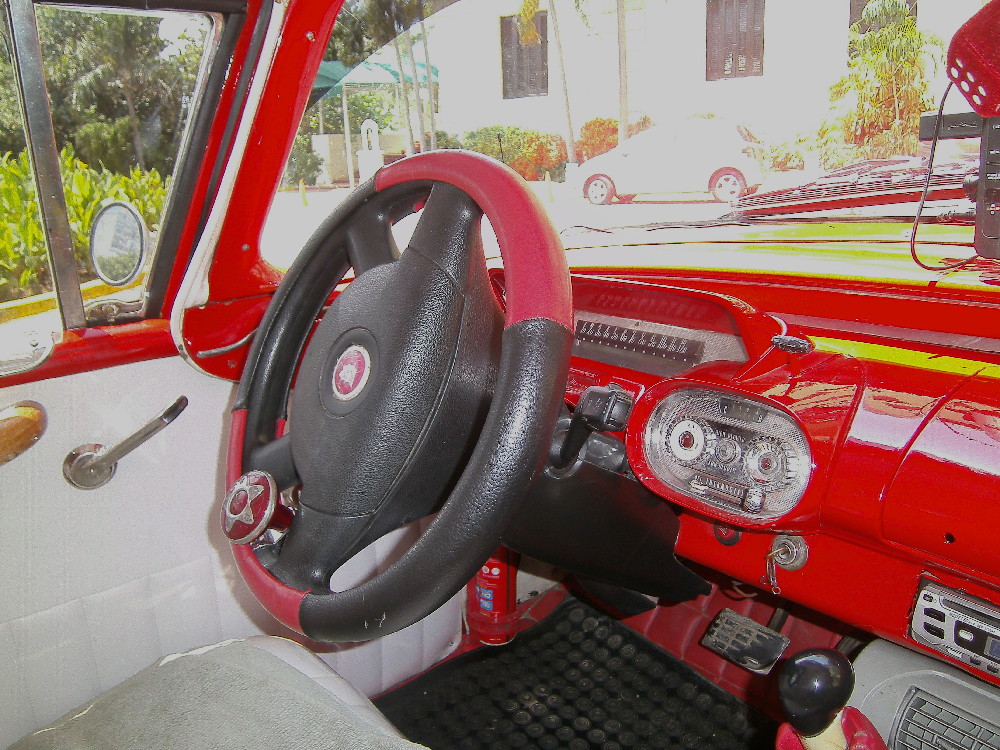
[The peso (CUP or MN), sometimes called the "national peso"
(or in Spanish moneda nacional), is one of two official currencies in use in Cuba,
the other being the convertible peso (CUC,
occasionally referred to as "dollar" in spoken language).
The conversion between (CUC) and (MN)
is $1(CUC)=$25(MN).
[Cuban state workers receive a portion of their wages
in convertible pesos, the rest in national pesos.
Shops selling basics, like fruit and vegetables,
generally accept only the normal peso, while "dollar shops" sell the rest.
The word "pesos" may refer to both
non-convertible and convertible money.
Cuban convertible pesos are 25 times more valuable,
but this does not completely eliminate the confusion for tourists:
since goods bought in national pesos have controlled prices,
tourists are sometimes confused by prices perceived as "too cheap."]
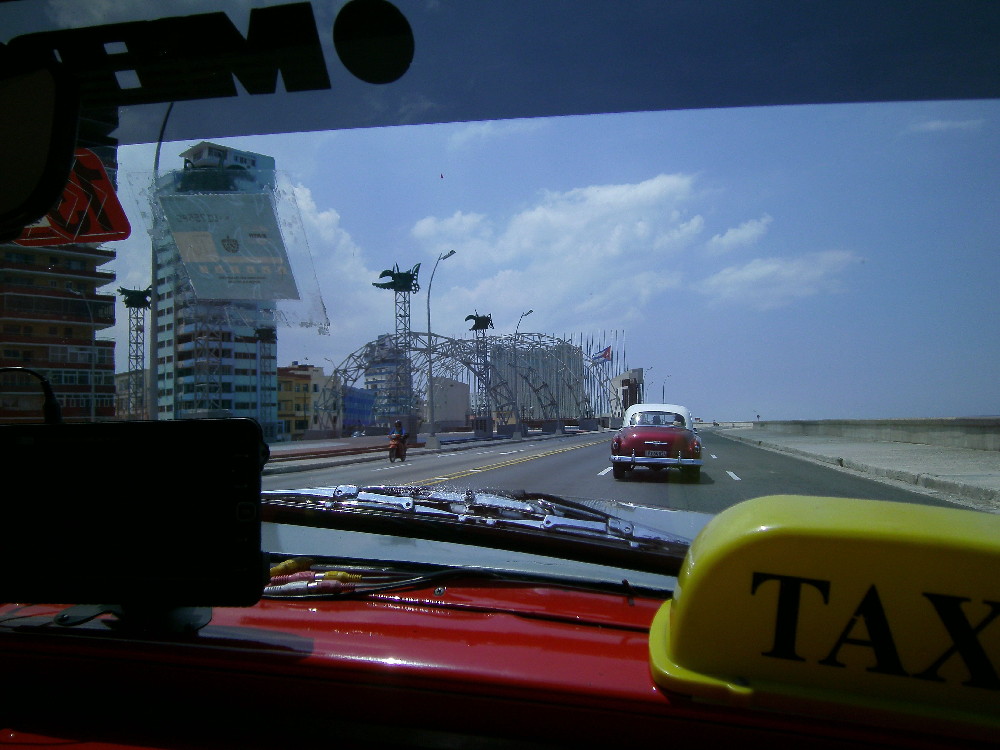
In a fascinating but grueling, six hours, we saw EVERY
HISTORICAL HIGHLIGHT in Habana that you might see in
any commercial DVD presentation with a personal narrative & anecdotes!
By car and on foot we traveled from Embassy Row and
a Santeria ritual healing (complete with TWO CHICKENS)
on the Almendares River to the bar at the top of the hotel that
"Papa" Hemingway frequented.
We spoke with our drivers (who understand English better
than they speak it because English is taught in public school),
and with Myron, who was the "official" tour guide.
As we traveled, we learned not only about the official history of Cuba & Habana,
but also what life is like living in the country:
How change had been held back for quite a while,
but that with recent changing attitudes in government and
the ceasing of animosity with the USA,
hope is present for young Cubans and their country.
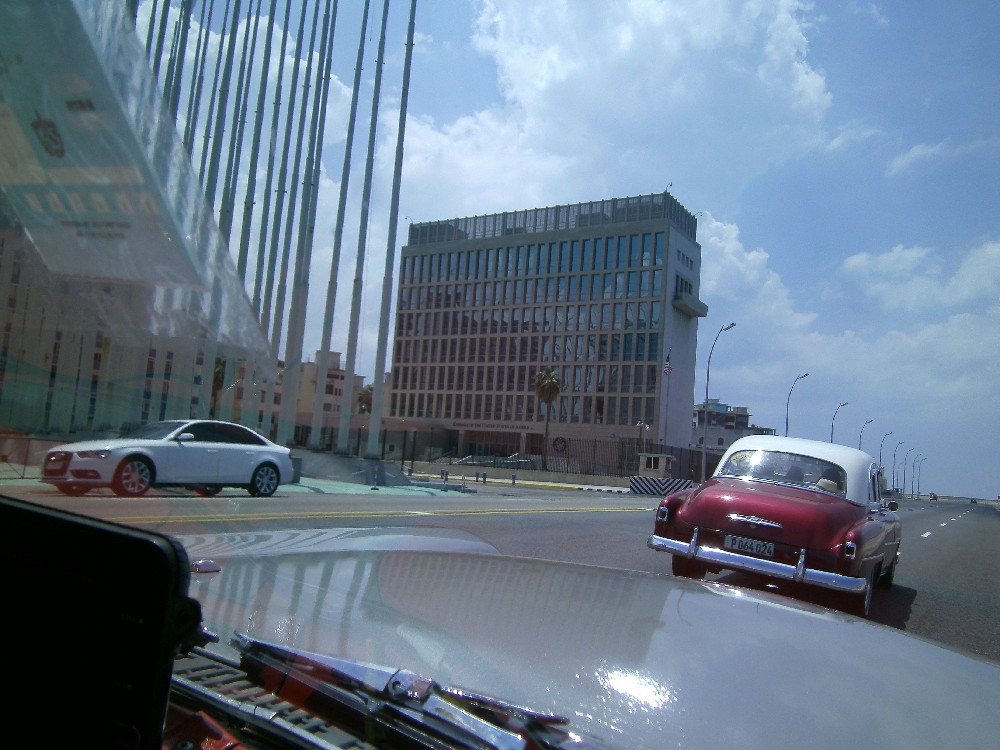
The "new" (built in 1953) U.S. Embassy (later in the day,
we also saw the previous U.S. Embassy building on Obisbo Street).
Its first floor has been repurposed, but the upper floors are decaying.
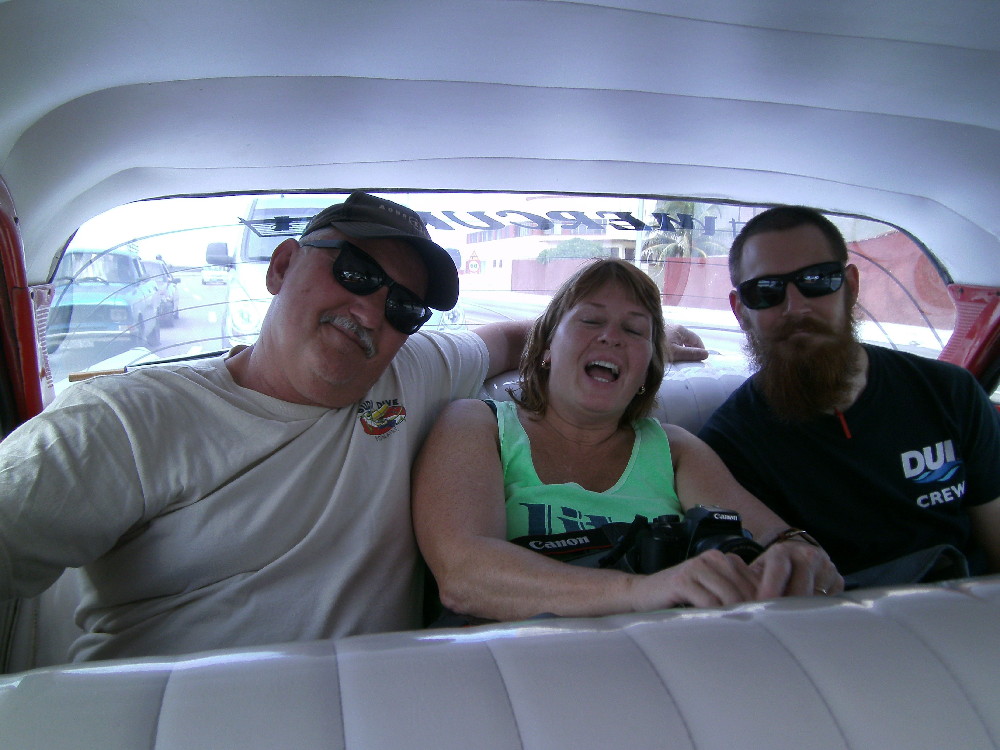
Bob, Carla, Billy & I were in one cab;
we traded vehicles later in the day so each part of our group
got to meet both drivers and ride in their vehicles.
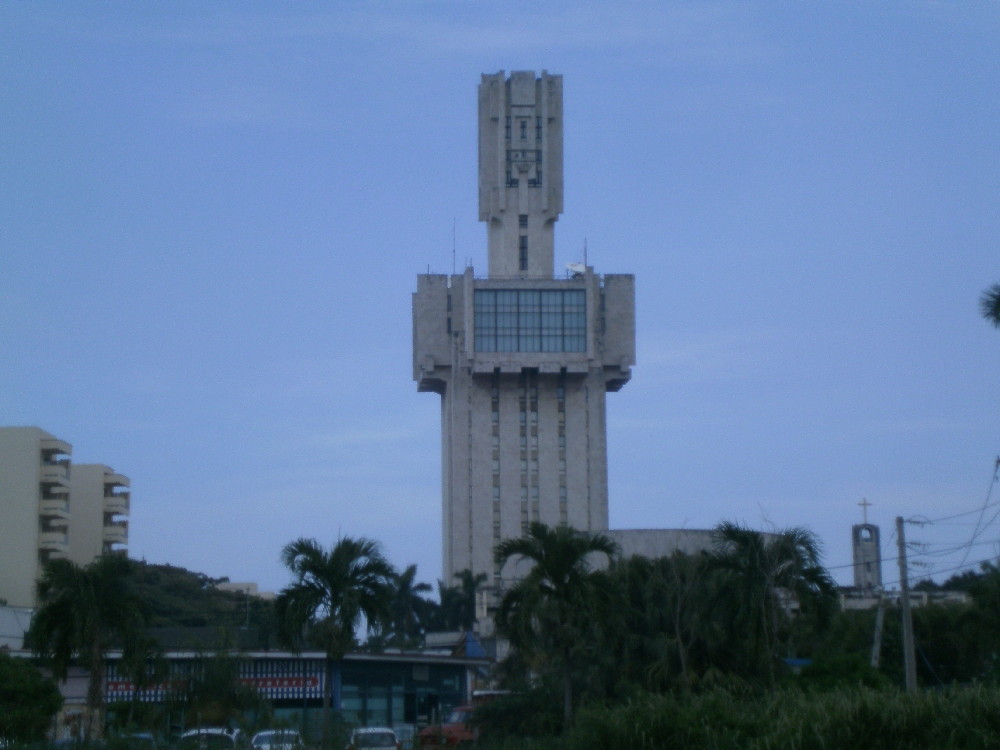
The Russian Embassy
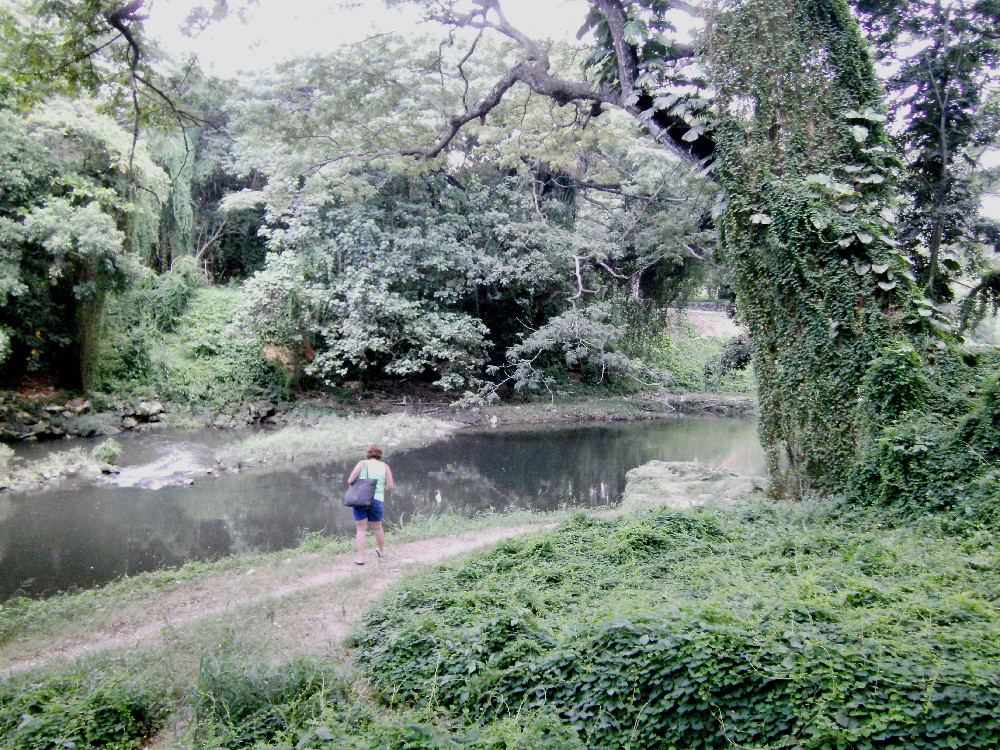
At a park, we were able to observe a very emotional ritual
involving an obviously young Cuban woman and, presumably,
her mother or grandmother.
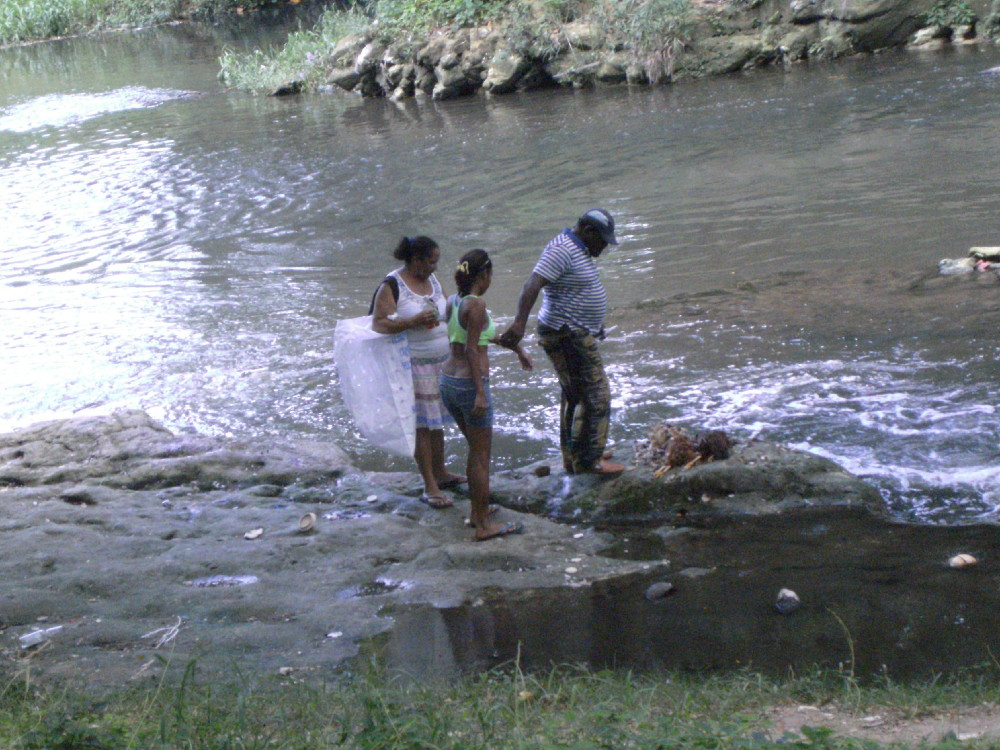
The park is very picturesque and
generally believed to be the residence of one of the Santeria spirits,
so rituals and sacrifices often occur there;
the river water, as per Myron, is very polluted.
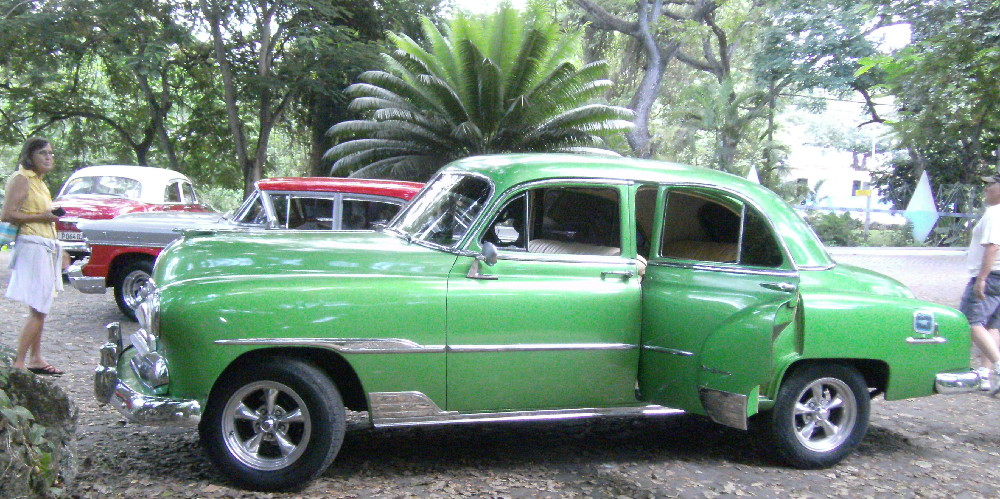
Another classic American car
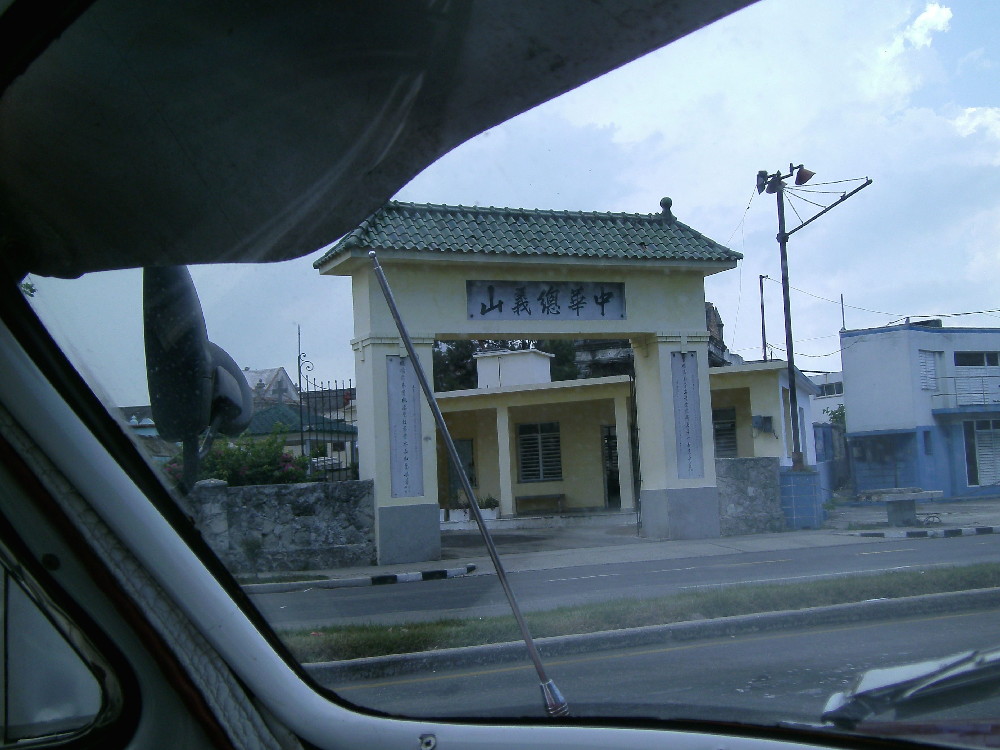
Chinese Cemetery in Habana.
As I was taking this photo from the taxi, a large delivery van
pulled up into the left-hand lane and would have blocked my shot,
BUT the driver SAW what I was doing and hung back,
leaving an open lane. I gave him a salute (tip of the hat)
and a "Thumbs Up".
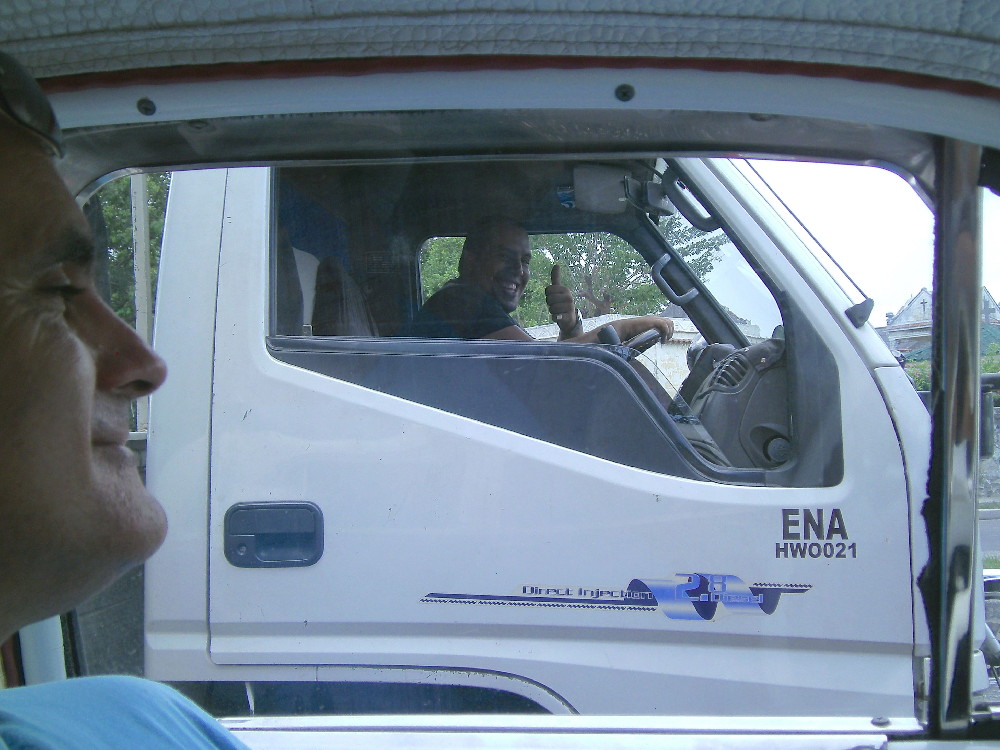
What he did in return:
He flashes me a big grin and a "Thumbs Up" right back!
We then passed the Cementerio de Cristobal Colon,
which was founded in 1876 in the Vedado neighborhood of Havana
on top of Espada Cemetery. Named for Christopher Columbus,
the 140-acre cemetery (we drove past its walls for blocks)
is noted for its many elaborately-sculpted memorials.
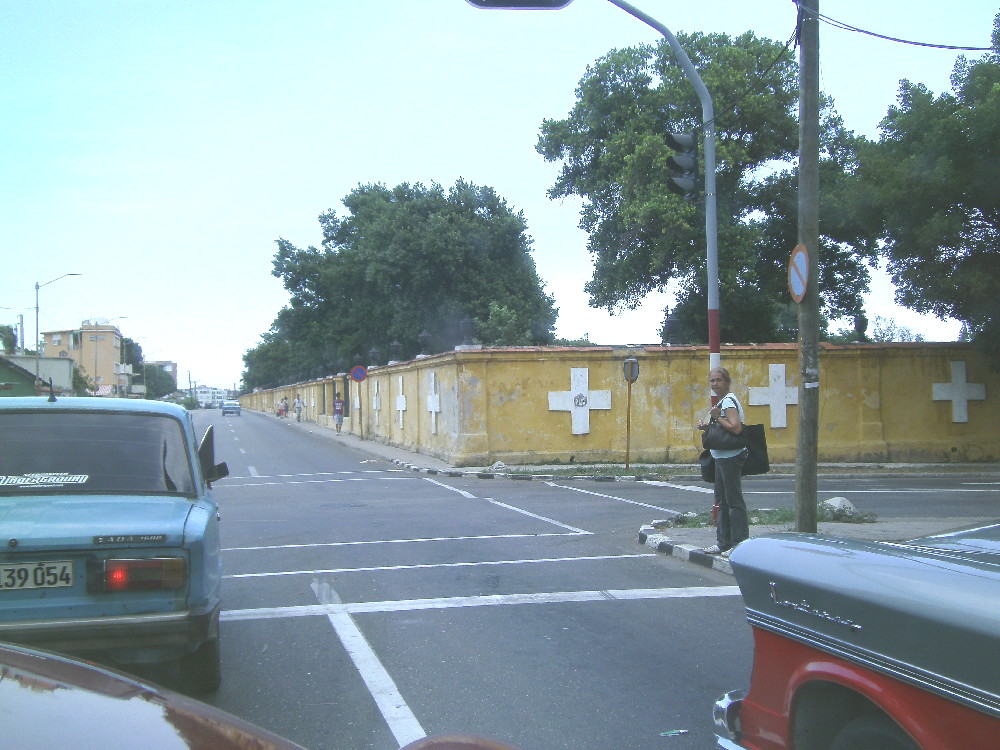
It is estimated that today the cemetery has more than 500
major mausoleums, chapels, and family vaults,blocks)
Myron said it held more than 800,000 graves and one million interments.
With space in this cemetery currently at a premium,
after three years, remains are removed from their tombs,
boxed up and placed in a storage building.
We saw many other buildings housing embassies
as we drove around.
Miramar & Siboney: we drove down the street where
many private residences had been converted into foreign embassies,
but these beautiful old residences were by original design somewhat secluded;
with their new function most were hidden behind greenery or walls
(for security) and it was not possible to photograph them.
|